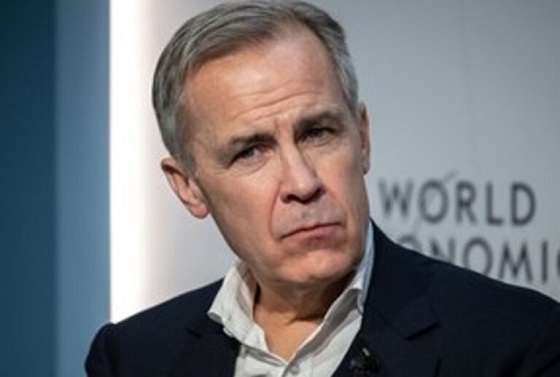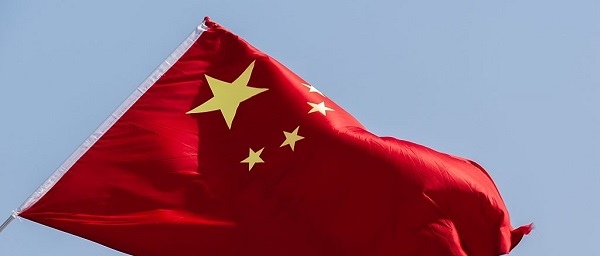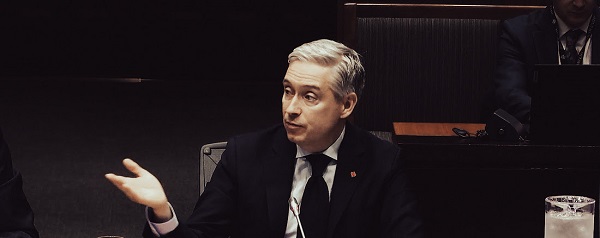Business
Dropping the elbows: Canada caves to Trump’s trade pressure by rolling back retaliatory tariffs

Quick Hit:
Canada is rolling back billions in tariffs on U.S. goods, a sharp reversal by Prime Minister Mark Carney aimed at easing tensions with President Donald Trump as trade talks heat up.
Key Details:
- Canada will eliminate 25% tariffs on U.S. consumer goods worth roughly $21.7 billion, including orange juice, wine, clothing, and motorcycles.
- Prime Minister Carney’s move follows a direct phone call with President Trump and marks a sharp break from his campaign promise to retaliate against U.S. trade measures.
- Canada will maintain tariffs on U.S. steel, aluminum, and automobiles — sectors where Trump has imposed his toughest levies.
Diving Deeper:
Prime Minister Mark Carney is abandoning one of his central campaign promises — to hit the United States with “maximum pain” through sweeping tariffs — and is instead extending what amounts to a trade olive branch to President Donald Trump. The decision to remove 25% tariffs on a broad range of U.S. consumer goods, valued at $21.7 billion, represents a remarkable about-face for a Canadian government that had previously positioned itself as one of Trump’s fiercest international trade adversaries.
The shift follows a phone call between Carney and Trump on Thursday, their first publicly acknowledged conversation in weeks. While Canada will continue to levy tariffs on steel, aluminum, and automobiles, the rollback is a clear sign that Carney is recalibrating his approach in response to U.S. pressure and the looming review of the U.S.-Mexico-Canada Agreement. The White House welcomed the move as “long overdue,” according to a senior official, signaling that Washington sees Ottawa’s retreat as validation of Trump’s hardline negotiating style.
Carney’s pivot is particularly striking given the fiery rhetoric that propelled him into office. During his campaign, he blasted Trump’s tariffs and vowed to retaliate aggressively. That posture may have served him politically against former Conservative leader Pierre Poilievre, but as prime minister, Carney appears more pragmatic. His finance ministry has already carved out exemptions for automakers and other industries since April, suggesting a growing awareness that trade wars can backfire economically.
The decision is also shaped by economic realities. Despite Canada’s earlier tariff blitz, economists note that the effective U.S. tariff rate on Canadian goods remains below 7% thanks to USMCA exemptions. Meanwhile, Canada’s retaliatory tariffs did not produce the inflation surge some feared, with consumer prices rising only 1.7% in July. Still, Carney faced the prospect of prolonged strain with Washington at a time when the U.S. economy is expanding under Trump’s leadership, and Canadian businesses were lobbying hard for relief.
For President Trump, this is another reminder that his “America First” approach is producing results. Canada, once defiant, is now backing down — a stark contrast to the confrontational posture of Justin Trudeau’s government and even Carney’s own campaign pledges. The message is clear: protectionist threats from Washington carry weight, and Canada’s leaders are recognizing that cooperation is more beneficial than confrontation.
The long-term question is whether Carney will maintain this more conciliatory posture or revert to his combative instincts when political pressures mount. For now, though, the rollback underscores Trump’s continued leverage on the global stage and his ability to secure favorable outcomes for American workers and industries.
Business
The Grocery Greed Myth

Haultain’s Substack is a reader-supported publication.
To receive new posts and support our work, please consider becoming a free or paid subscriber.
Try it out.
The Justin Trudeau and Jagmeet Singh charges of “greedflation” collapses under scrutiny.
“It’s not okay that our biggest grocery stores are making record profits while Canadians are struggling to put food on the table.” —PM Justin Trudeau, September 13, 2023.
A couple of days after the above statement, the then-prime minister and his government continued a campaign to blame rising food prices on grocery retailers.
The line Justin Trudeau delivered in September 2023, triggered a week of political theatre. It also handed his innovation minister, François-Philippe Champagne, a ready-made role: defender of the common shopper against supposed corporate greed. The grocery price problem would be fixed by Thanksgiving that year. That was two years ago. Remember the promise?
But as Ian Madsen of the Frontier Centre for Public Policy has shown, the numbers tell a different story. Canada’s major grocers have not been posting “record profits.” They have been inching forward in a highly competitive, capital-intensive sector. Madsen’s analysis of industry profit margins shows this clearly.
Take Loblaw. Its EBITDA margin (earnings before interest, taxes, depreciation, and amortization) averaged 11.2 per cent over the three years ending 2024. That is up slightly from 10 per cent pre-COVID. Empire grew from 3.9 to 7.6 per cent. Metro went from 7.6 to 9.6. These are steady trends, not windfalls. As Madsen rightly points out, margins like these often reflect consolidation, automation, and long-term investment.
Meanwhile, inflation tells its own story. From March 2020 to March 2024, Canada’s money supply rose by 36 per cent. Consumer prices climbed about 20 per cent in the same window. That disparity suggests grocers helped absorb inflationary pressure rather than drive it. The Justin Trudeau and Jagmeet Singh charges of “greedflation” collapses under scrutiny.
Yet Ottawa pressed ahead with its chosen solution: the Grocery Code of Conduct. It was crafted in the wake of pandemic disruptions and billed as a tool for fairness. In practice, it is a voluntary framework with no enforcement and no teeth. The dispute resolution process will not function until 2026. Key terms remain undefined. Suppliers are told they can expect “reasonable substantiation” for sudden changes in demand. They are not told what that means. But food inflation remains.
This ambiguity helps no one. Large suppliers will continue to settle matters privately. Small ones, facing the threat of lost shelf space, may feel forced to absorb losses quietly. As Madsen observes, the Code is unlikely to change much for those it claims to protect.
What it does serve is a narrative. It lets the government appear responsive while avoiding accountability. It shifts attention away from the structural causes of price increases: central bank expansion, regulatory overload, and federal spending. Instead of owning the crisis, the state points to a scapegoat.
This method is not new. The Trudeau government, of which Carney’s is a continuation, has always shown a tendency to favour symbolism over substance. Its approach to identity politics follows the same pattern. Policies are announced with fanfare, dissent is painted as bigotry, and inconvenient facts are set aside.
The Grocery Code fits this model. It is not a policy grounded in need or economic logic. It is a ritual. It gives the illusion of action. It casts grocers as villains. It gives the impression to the uncaring public that the government is “providing solutions,” and that “it has their backs.” It flatters the state.
Madsen’s work cuts through that illusion. It reminds us that grocery margins are modest, inflation was monetary, and the public is being sold a story.
Canadians deserve better than fables, but they keep voting for the same folks. They don’t think to think that they deserve a government that governs within its limits; a government that accept its role in the crises it helped cause, and restores the conditions for genuine economic freedom. The Grocery Code is not a step in that direction. It was always a distraction, wrapped in a moral pose.
And like most moral poses in Ottawa, it leaves the facts behind.
Haultain’s Substack is a reader-supported publication.
To receive new posts and support our work, please consider becoming a free or paid subscriber.
Try it out.
Business
Tax filing announcement shows consultation was a sham

The Canadian Taxpayers Federation is criticizing Prime Minister Mark Carney for announcing that the government is expanding automatic tax filing within hours of the government’s consultation ending.
“There’s no way government bureaucrats pulled an all-nighter reading through thousands of submissions and survey responses before sending Carney out to make an announcement on automatic tax filing the next morning,” said Franco Terrazzano, CTF Federal Director. “Asking Canadians for their opinion and then ignoring them isn’t a good look for Carney, it makes it look like the government is holding sham consultations.”
The government of Canada announced consultations on automatic tax filing so Canadians could give the government “broad input through an online questionnaire.”
The government’s consultation ended on Thursday, Oct. 9, 2025.
Hours after the consultation ended, Carney today announced the government would expand automatic tax filing.
The CRA is already one of the largest arms of the federal government with 52,499 bureaucrats.
The CRA added 13,015 employees since 2016 – a 33 per cent increase. For comparison, America’s Internal Revenue Service has 90,516 bureaucrats. The CRA has one bureaucrat for every 800 Canadians. The IRS has one bureaucrat for every 3,800 Americans.
“The CRA can barely answer the phone, so Carney shouldn’t be giving those bureaucrats more busy work to do,” Terrazzano said. “The CRA is a bloated mess, and Carney should be cutting the cost of bureaucracy not scheming up ways to give the bureaucracy more power over taxpayers.”
The CRA only answered about 36 per cent of the 53.5 million calls it received between March 2016 and March 2017, according to a 2017 Auditor General report. When Canadians were able to get the CRA on the phone, call centre agents gave inaccurate information about 30 per cent of the time.
“The CRA acting as both tax collector and tax filer is a serious conflict of interest,” Terrazzano said. “Trusting the taxman to do your tax return is like trusting your dog to protect your burger.
“Carney should stop the CRA power grab and instead cut taxes and simplify the tax code.”
-

 Alberta2 days ago
Alberta2 days agoFact, fiction, and the pipeline that’s paying Canada’s rent
-

 International1 day ago
International1 day agoTrump gets an honourable mention: Nobel winner dedicates peace prize to Trump
-

 Business18 hours ago
Business18 hours agoCarney government plans to muddy the fiscal waters in upcoming budget
-

 Business1 day ago
Business1 day agoTrump Warns Beijing Of ‘Countermeasures’ As China Tightens Grip On Critical Resources
-

 Alberta2 days ago
Alberta2 days agoAlberta Is Where Canadians Go When They Want To Build A Better Life
-

 International2 days ago
International2 days agoTrump-brokered Gaza peace agreement enters first phase
-

 Crime1 day ago
Crime1 day agoCanada’s safety minister says he has not met with any members of damaged or destroyed churches
-

 COVID-191 day ago
COVID-191 day agoTamara Lich says she has no ‘remorse,’ no reason to apologize for leading Freedom Convoy







